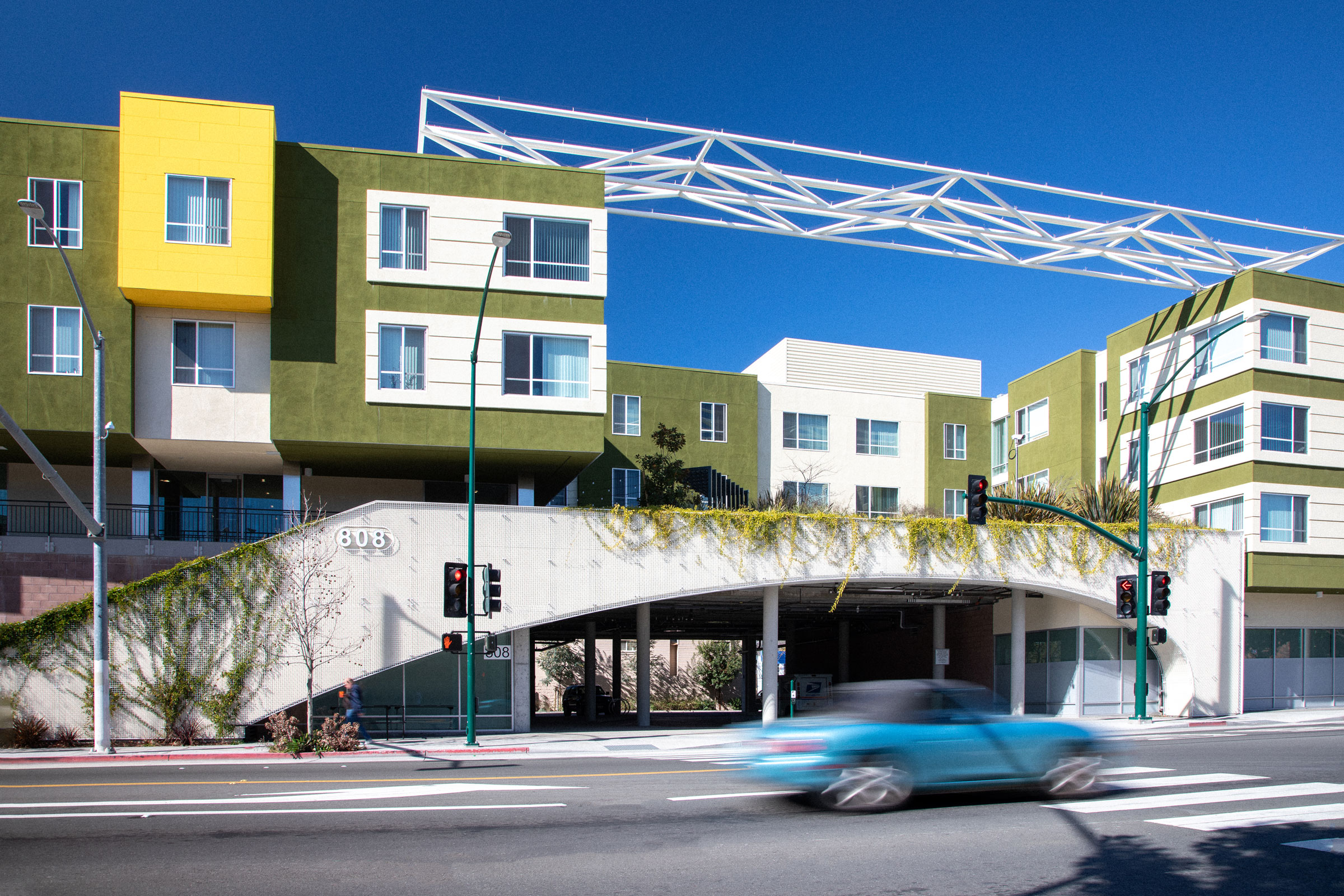Story at a glance:
- Wildlife populations have declined by 60% over the past four decades, but there are ways to bring back biodiversity and reverse the loss.
- Integrating green space in urban environments provides health and financial benefits.
Biodiversity encompasses the number of species, genetic variation, and their complex interplay in ecosystems. A landmark 2019 report by the United Nations featured scientific warnings that one million species, or roughly one-eighth of the estimated total, could face extinction within decades.
An alarming trend has been observed in land-based habitats, with a majority of native species suffering a decline of 20% or more since 1900. There has been a noticeable threat to about a third of marine mammals and reef-forming corals, and to over 40% of amphibian species. For insect species, trends point towards 10% being threatened.
Shockingly, at least 680 vertebrate species have become extinct since the 16th century, and over 9% of all domesticated mammal breeds for food and agriculture went extinct by 2016, with 1,000 more breeds at risk. Global habitat and biodiversity loss are unprecedented since humankind appeared on the scene, with wildlife populations declining by 60% over the past four decades.
Biodiversity continues to deteriorate due to pollution, land use changes, overexploitation, invasive species, and climate change. Disturbingly, many researchers now believe the world is experiencing the sixth mass extinction event, a rate of biodiversity loss unseen since earlier mass extinctions when up to 95% of all species were lost. Ecosystems may take millions of years to recover from the damage wrought by such a catastrophe.
To address these concerns, it is imperative to safeguard natural areas, restore damaged habitats, and improve green spaces to promote biodiversity and valuable ecosystem services. Urban areas have become interesting hotspots for environmental preservation, especially as most of the world’s population resides in cities. An encouraging aspect is that within these urban spaces, multiple challenges and their consequences can be alleviated through a system of green interventions or urban green infrastructure, which can successfully balance environmental preservation with urban development.
What is Biodiversity and Why Should You Care?
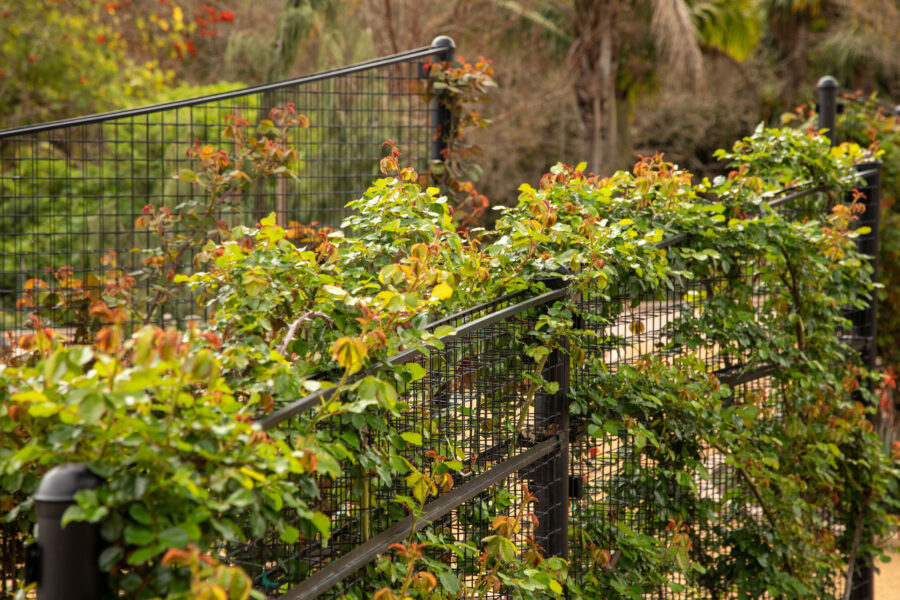
South Coast Botanic Garden in Palos Verde Peninsula, California. Photo courtesy of Greenscreen
From a scientific perspective biodiversity represents the variety and variability of all life on Earth, including genetic, species, and ecosystem diversity. However, what does this diversity mean for you? And what is the impact of biodiversity loss on your life, health, and well-being? Why should you care?
Biodiversity plays a crucial role in sustaining human health and productivity. Ecosystem products and services like food, freshwater, and fuel sources are essential to our survival. If these services decline due to biodiversity loss it can have severe consequences for human health, including indirect impacts on livelihoods, income, migration, and an increased potential for political conflict.
The diversity of microorganisms, flora, and fauna is vital to medical and pharmacological science. The Earth’s biodiversity offers potential treatments for a variety of diseases and health problems. Hence, global biodiversity loss puts people’s health and well-being at risk.
We must prioritize the preservation of healthy and biodiverse ecosystems for thriving societies. However, we should also work to preserve biodiversity for the sake of biodiversity for ethical reasons.
Financial Aspects of Biodiversity Loss
Unfortunately biodiversity loss and related issues have often been viewed as soft topics and thus have not been taken seriously—partly due to a lack of hard financial incentives to act. However, it should be noted that in 1997 Robert Costanza and his colleagues calculated the global value of ecosystem services at $33 trillion annually, which equates to the total global GDP at that time.
Globally more than 60,000 species with medicinal, nutritional, and aromatic properties are traded annually for various purposes accounting for more than 500,000 tons of material. The worth of the trade in medicinal plants alone is more than USD 2.5 billion.
It would be hard to comfortably survive in a world with significantly reduced biodiversity.
Medical Aspects of Biodiversity Loss
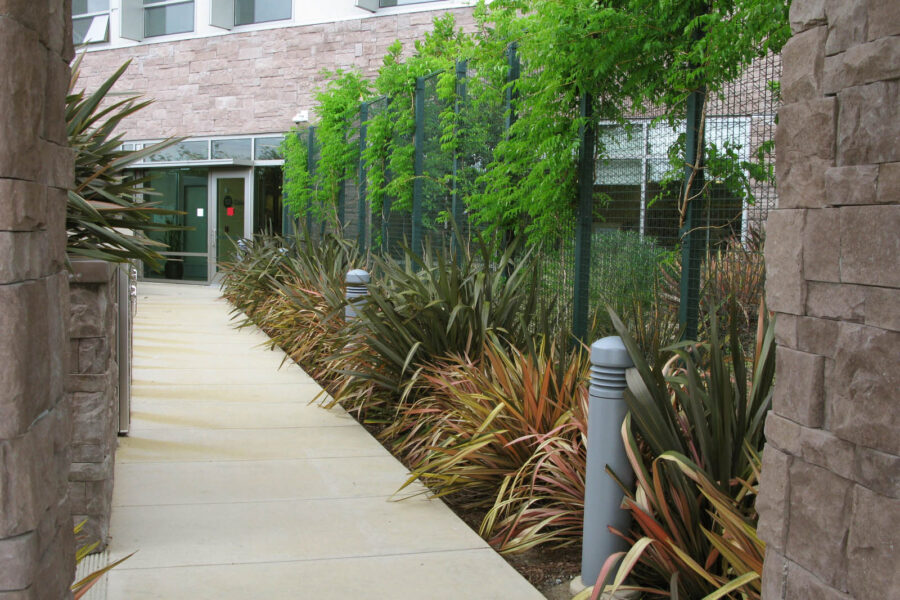
Kaiser Permanente in San Mateo, California. Photo courtesy of Greenscreen
Natural products continue to be in high demand for the development of biomedical research and medicinal purposes. Synthetic molecules are often based on naturally occurring compounds and derivatives, making biodiversity critical for developing new medications and treatments.
In many places traditional medicine is vital in primary health care, used by around 60% of the world’s population, and is often an integral part of their health care system. Many communities depend on natural products for medicinal purposes, cultural practices, and food.
Tragically, biodiversity loss and land degradation also increase the likelihood of infectious disease outbreaks. Strong links have been observed between deforestation, poor land use, uncontrolled urbanization, and disease transmission. As a result, it is likely that we will see more pandemics over the coming decades.
Some good news: Studies have shown access to green infrastructure can significantly accelerate recovery time in hospitalized patients. It has been demonstrated that being exposed to natural plant elements can lead to an approximately 8% decrease in hospital duration, yielding substantial cost savings for patients and the health care system. There are many indirect positive effects of introducing a biodiversity aspect into construction planning that may make an interesting business case.
Biodiversity and Water
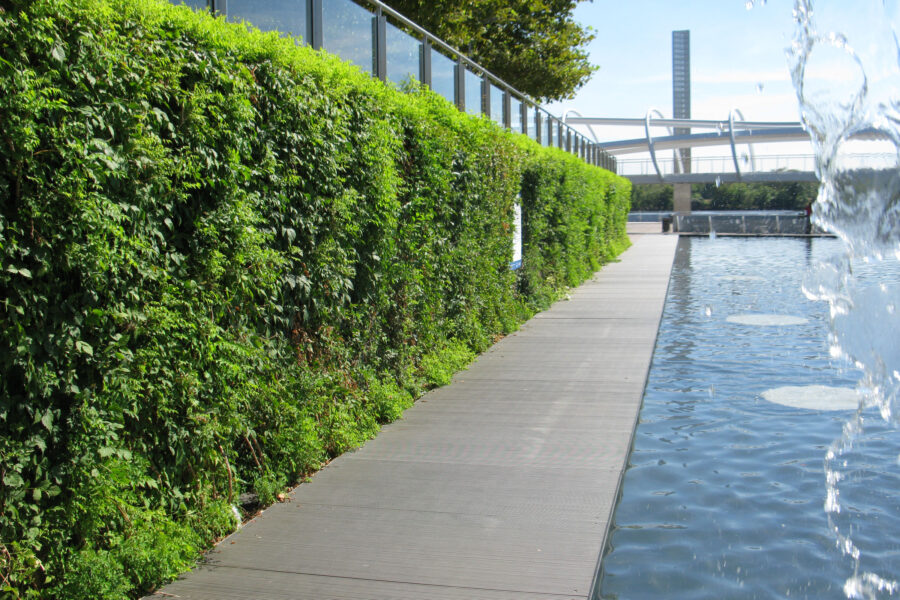
The Yards Park in Washington, DC. Photo courtesy of Greenscreen
Freshwater ecosystems like rivers, lakes, and wetlands face significant biodiversity threats primarily attributable to water demands. The loss of wetlands is staggering—reaching up to 95% in some regions.
Wetlands are renowned as biological super-systems since the optimal interplay of shallow water, high nutrient content, and high primary productivity make wetlands a prime environment to sustain remarkable levels of biodiversity. They support diverse and abundant species communities, comparable in species richness to those found in tropical rainforests and coral reefs.
More than one-third of available and renewable freshwater on Earth is consumed for agriculture, industrial, and domestic uses, often leading to water source contamination and endangering public health. Creative low-tech interventions like green infrastructure can positively impact the water cycle in urban settings. Adding back greenery to our cities not only adds biodiversity but also re-establishes the natural water cycle, such as groundwater recharging, and adds natural cooling due to increased evapotranspiration.
Green Infrastructure as a Tool to Mitigate Biodiversity Loss
With more than 50% of the world’s population residing in urban areas, urbanization is a global phenomenon. However, the growth and expansion of cities are endangering biodiversity. The construction of buildings, roads, and parking lots are destroying the critical natural habitats for plant and animal species’ survival, leading to habitat fragmentation. Such developments cause alterations to nutrient deposition and changes in water redistribution, further threatening biodiversity. It’s a situation that requires our urgent attention.
Achieving a sustainable balance between human needs and natural ecosystems poses significant challenges. But integrating green space into urban environments can provide the solution. Implementing green infrastructure can increase urban biodiversity while also considering the needs of city dwellers.
Green infrastructure is generally referred to as all engineered features incorporating natural elements, like vegetation, into the urban landscape. These features coexist with and support ecological services that cultivate a flourishing urban ecosystem. Examples of green infrastructure solutions are green walls (including trellis systems by Greenscreen), green roofs, parks, and sustainable drainage systems.
Urban Food Production

The Gathering Place in Denver. Photo courtesy of Greenscreen
Urban farming is on the rise. The conversion of derelict buildings, warehouses, and black rooftops to agricultural landscapes and rooftop gardens not only produces locally grown food but also increases urban biodiversity and improves the local microclimate.
According to a report published by Fior Markets, the global urban farming market is expected to grow from $2.77 billion to $16.14 billion by 2027. North America is a major player seeking to meet the demand for fresh vegetables from retail stores and restaurants.
Considering the predicted increase in population to more than 10 billion by 2050, we will need to amplify and find novel methods for food production in both urban and rural areas. In addition, higher income levels in the developing world will cause an increase in calorie consumption, making agricultural production needs surge by about 70% within three decades. Many postulate an increasing role of urban areas to cover this calorific need.
It is also important to recognize the impact urban farming has on the local communities and how it may lead to increased awareness of nature and improved physical and mental health.
Biodiversity and Fragmentation
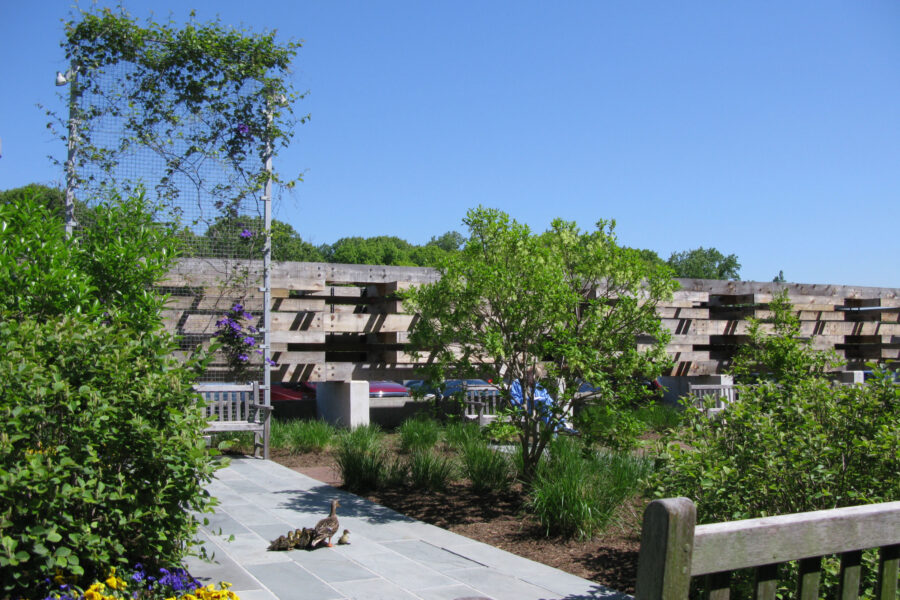
Holy Cross Hospital in Silver Spring, Maryland. Photo courtesy of Greenscreen
Protecting valuable ecosystem services requires avoiding the isolation of natural ecosystems, as the isolated islands do not allow for genetic exchange between populations of the same species.
Constructing an interconnected green infrastructure network is essential in facilitating the continuous movement of species (and residents). However, this is not without its challenges. One such challenge is the fragmentation of habitats caused by activities like traffic routing through natural areas. This can lead to habitat degradation and biodiversity loss, ultimately reducing the functionality and provision of ecosystem services.
To secure interconnection, bio-corridors and eco-ducts can provide the required connectivity in an urban landscape. It is necessary to design the different elements of a green infrastructure network, giving attention to interconnections and the various needs of differing species. For example, the creation of highways for pollinators, as seen in Oslo. This project involved planting nectar-giving species and green roofs, providing conditions suitable for the overpass of bees throughout the city. Similarly, another initiative promoting Hedgehog Highways was undertaken in London, facilitating the migration of hedgehogs.
In urban environments, using several linear elements of green infrastructure—like alleys, hedges, and waterways—is necessary to allow small wildlife species to migrate.
Combining green infrastructure solutions is crucial in maintaining and creating natural habitats that support diverse wildlife in urban, developed, or developing environments. This approach emphasizes the implementation of ecological corridors that connect habitats, allowing for the seamless movement of species between isolated blocks. The biodiversity topic, including ecological corridors, must be considered from a city planning- and single-project perspective to achieve the best effect.
How Green Walls Boost Biodiversity
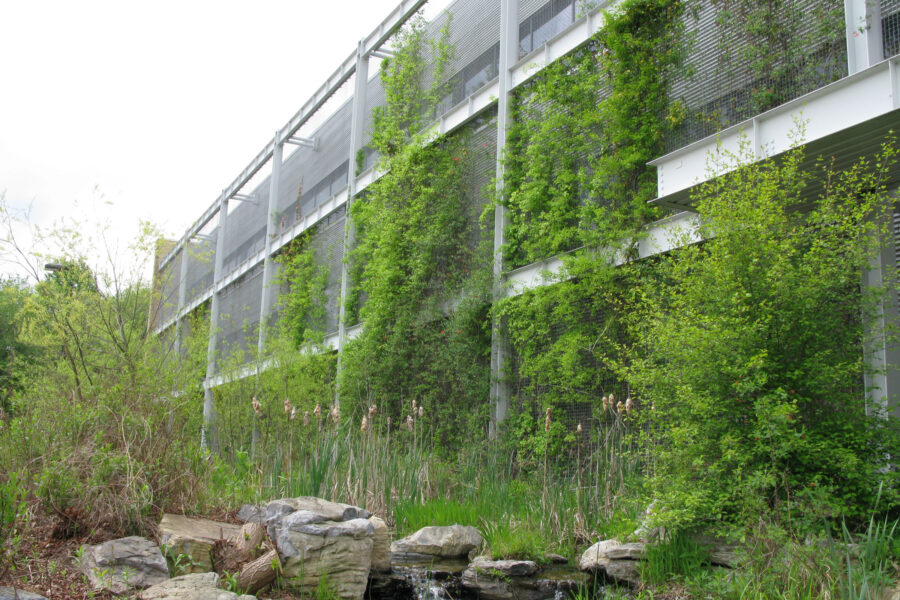
National Wildlife Federation in Reston, Virginia. Photo courtesy of Greenscreen
In densely populated cities and urban environments where space is at a premium, incorporating vegetation into vertical structures referred to as green walls is an increasingly popular approach to boost green infrastructure. While traditional green wall methods like climbing plants have been used as far back as the fabled Hanging Gardens of Babylon as well as the Roman and Greek Empires, new engineering and technological advances have resulted in a variety of designs that can be incorporated into both new and existing infrastructure.
From a local perspective green walls and trellis systems have proven to provide a variety of benefits to biodiversity, with even simple collections of flora providing invaluable resources to urban bird populations through food, shelter, and nesting habitats. On a larger scale, these green walls act as a corridor or stepping stone for movement and dispersal, increasing the stability of urban biodiversity on a macro level in the face of unpredictable disturbances or changes.
Thanks to advancements in technology and engineering, creating living walls that mimic natural habitats and support biodiversity enhancement has never been easier. By optimizing a well-connected network, managed through a landscape-scale approach, cities can mitigate the impacts of ongoing urbanization on local ecology, promoting the maintenance of a healthy and thriving natural ecosystem.
Conclusion
Urban biodiversity has often been overlooked, but it is becoming increasingly vital to identify and appreciate assets such as green infrastructure, wetlands, vacant lands, and gardens in urban areas. Cemeteries and roadside verges have also been recognized as potential biodiversity hotspots, while green roofs, botanical gardens, green walls, residential gardens, and villas are valuable contributors. By acknowledging urban assets that support biodiversity, we can help maintain and enhance this essential resource.
We should also not forget the ecosystem services that come with these interventions, such as cleaner air, natural cooling, increased health and well-being, more efficient groundwater recharging, and local food production, to mention a few.
While green infrastructure is a better choice than traditional gray infrastructure, it’s important to remember that protecting natural ecosystems is paramount for preserving biodiversity. We need to prioritize the conservation of these areas in policy decisions. When natural areas are limited, advanced constructed green infrastructure methods should be considered a superior alternative to conventional gray infrastructure.

